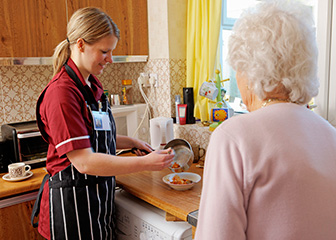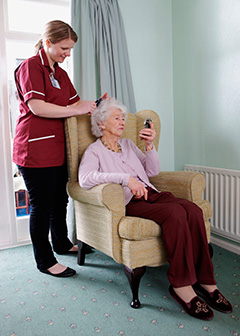Summary

| Quick Facts: Home Health and Personal Care Aides | |
|---|---|
|
$20,170 per year
$9.70 per hour |
|
| Less than high school | |
| None | |
| Short-term on-the-job training | |
| 1,878,700 | |
| 70% (Much faster than average) | |
| 1,313,200 | |
What Home Health and Personal Care Aides Do
Home health and personal care aides help people who are disabled, chronically ill, or cognitively impaired. They also help older adults who may need assistance. They help with activities such as bathing and dressing, and they provide services such as light housekeeping. In some states, home health aides may be able to give a client medication or check the client’s vital signs under the direction of a nurse or other healthcare practitioner.
Work Environment
Home health and personal care aides work in a variety of settings. Most work in a client’s home; others work in small group homes or larger care communities.
How to Become a Home Health or Personal Care Aide
There are no formal education requirements for home health and personal care aides. Home health aides working in certified home health or hospice agencies must get formal training and pass a standardized test.
Pay
The median annual wage of home health aides was $20,560 in May 2010. The median annual wage of personal care aides was $19,640 in May 2010.
Job Outlook
Employment of home health aides is expected to grow by 69 percent from 2010 to 2020, much faster than the average for all occupations. Employment of personal care aides is expected to grow by 70 percent from 2010 to 2020, much faster than the average for all occupations.
Similar Occupations
Compare the job duties, education, job growth, and pay of home health and personal care aides with similar occupations.
O*NET
O*NET provides comprehensive information on key characteristics of workers and occupations.
Contacts for More Information
Learn more about home health and personal care aides by contacting these additional resources.











